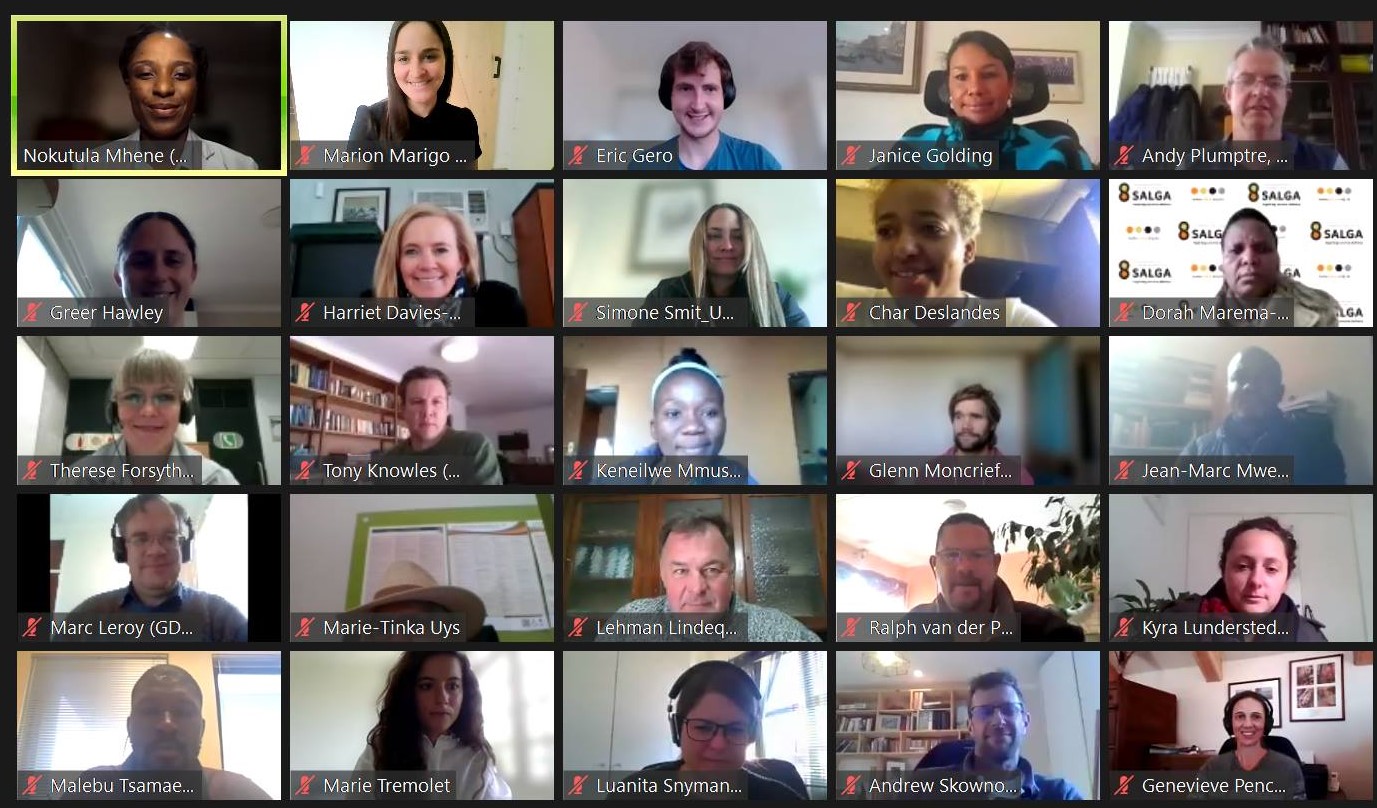
Mapping Hope: Putting Nature at the Heart of Development Planning
Transforming towards nature-positive development in South Africa
Authors:
- Nokutula Mhene, UNDP South Africa Country Office - picture
- Greer Hawley, Knowledge Management Expert - Mapping Nature for People and Planet project - picture
- Christina Supples, Senior Policy Advisor on Biodiversity, UNDP – picture
- Annie Virnig, Special Advisor on Spatial Planning, UNDP - picture
South Africa is one of the most biodiversity-rich countries in the world, making us a preferred and one of the top ranked destinations for nature-based tourism in Africa. In stark contrast, we are also home to some of the poorest communities, plagued with unemployment and must strive to bridge economic and social inequality. This is known as South Africa’s triple challenge of poverty, inequality and unemployment. Economic growth is therefore a prime agenda in the National Development Plan, with our environment considered a catalyst towards devising many potential solutions.
From 4-6 October 2021, the virtual Nature for Life Hub, coinciding with the 76thUnited Nations General Assembly, called each and every one of us – activists, philanthropic leaders, businesses, scientists Heads of State, and Indigenous representatives – to make the transformational changes needed for a nature-positive future.
Day 1 of the Hub, on 4 October 2021, Transforming our Relationship to the Planet, offered powerful examples of initiatives that began this transformational change at the local, global, and national levels. As a contribution, we are sharing how maps are helping us bring together diverse stakeholders to put nature at the heart of sustainable development. We are working together with stakeholders ranging from local communities, spatial agencies, leading scientists, and our government to create a map of hope that charts where to act for nature, climate, and humankind. Because we are a country facing stark poverty, unemployment, and inequality, our ‘map of hope’ is helping us to determine where actions for nature can nurture the biodiversity economy and invest in the conservation and rehabilitation of important natural areas that deliver the ecosystem services we need to survive and thrive.
South Africa is considered a global leader in the use of spatial data for policymaking; however, these data are seldom integrated across sectors in a meaningful way. Yet, maps help us see where nature is thriving, where it is being destroyed, and where it is contributing to economic development. Gathering national experts for a virtual consultation series is helping us take this important step. We are working together to identify a cohesive set of top national policy targets related to nature, climate, and sustainable development. Using spatial data to represent these goals, we are identifying a series of essential life support areas – or ELSAs – that if protected, sustainably managed or restored, can provide our citizens with the ecosystem services that are critical to mankind's wellbeing, such as carbon storage, food, fresh water, water filtration, and disaster risk reduction. After perfecting this process through several iterations, and producing maps of hope for specific themes, we will be embedding the results into specific national policies for nature, climate, and development.
The ELSA maps are a key tool to help us build consensus on how and where to act, aligning policy makers around the common goal of safeguarding our planetary safety net. For the first time, the United Nations Development Programme (UNDP) South Africa, the South African Department of Forestry, Fisheries and the Environment, and the South African National Biodiversity Institute and other stakeholders are collectively identifying mechanisms to better foster the economic contribution of wildlife ranching to the biodiversity economy and Ecosystem-based Adaptation approach to climate change using ELSA maps. Mapping synergies and trade-offs in potential development pathways is helping us to integrate the spatial prioritization and planning, already developed in South Africa in a number of sectors, as we strive to transition towards a more nature-positive economy that leaves no-one behind.
During Day 1 of the Nature for Life Hub, dialogue was heard from unique voices that are mapping hope in Cambodia, Costa Rica, Colombia, the Dominican Republic, Ecuador, and South Africa. Participants were invited to journey to a world where indigenous peoples in the Ecuadorian Amazon can map the lands they have safeguarded for millennia on a mobile app, even without internet connectivity. They further learnt how a satellite skimming the sky can document deforestation, and alert community and government enforcement via their mobile phones where it occurs. UNDP’s UN Biodiversity Lab 2.0 demonstrated how it enables access to over 400 maps and datasets on nature, climate change, and human development to generate insight for transformative policy and action.
Day 1 of the Nature for Life Hub was a reminder for every one of us to act, on 4 October participants got to learn how data is used to put nature at the heart of development planning and were inspired to co-create a nature-positive future. Together, we can transform our relationship to the planet and shape the quality of our future together on Earth.
Categories
Archives
- January 2026 (1)
- December 2025 (2)
- November 2025 (5)
- October 2025 (6)
- September 2025 (2)
- August 2025 (10)
- July 2025 (9)
- June 2025 (5)
- May 2025 (8)
- April 2025 (9)